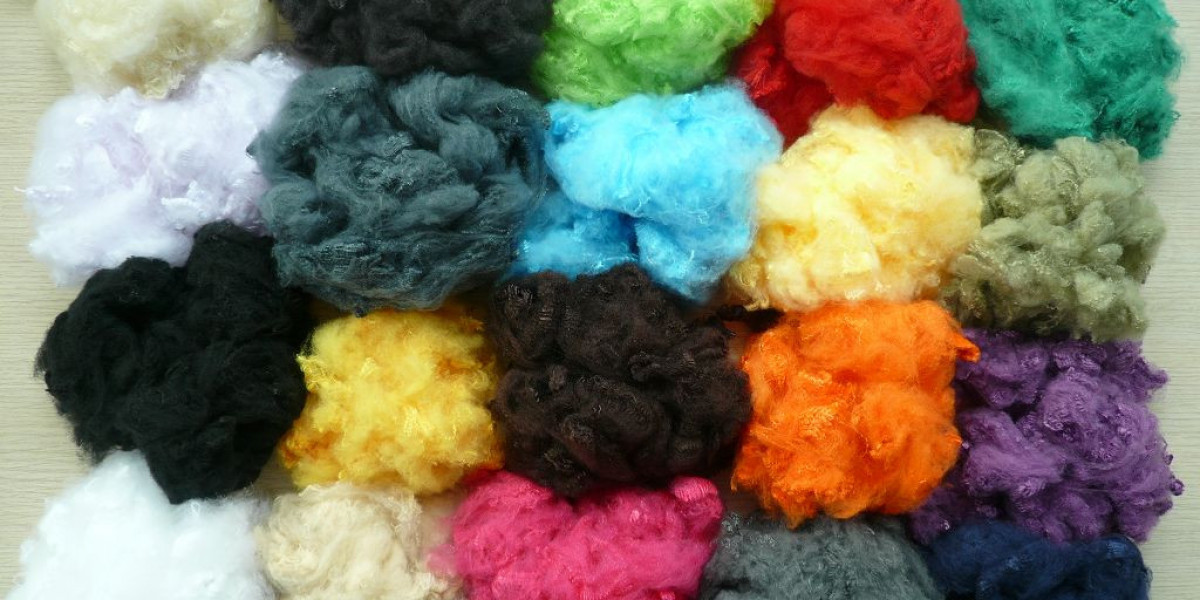Introduction
The staple fiber market plays a pivotal role in the global textile, automotive, and nonwoven industries. Staple fibers, short fibers of consistent length, are used in a wide range of applications, from clothing and bedding to industrial textiles and automotive components. The supply chain for staple fibers is complex, involving several stages from raw material procurement to final distribution. This article provides an overview of the key components of the staple fiber supply chain, focusing on manufacturing and distribution processes.
Manufacturing Process
The manufacturing of staple fibers involves several key stages, from raw material selection to fiber production. These stages differ for synthetic and natural fibers, but both require highly coordinated processes.
1. Raw Material Procurement
Synthetic Fibers: Synthetic staple fibers, such as polyester and nylon, are derived from petrochemical products. The first step in their production is the procurement of raw materials like purified terephthalic acid (PTA) and ethylene glycol, which are chemically processed to create polymers.
Natural Fibers: Natural staple fibers are sourced from plant, animal, or mineral origins. Cotton, wool, and flax are harvested, while fibers from plant-based materials like jute and hemp are processed for spinning.
2. Fiber Production
Synthetic Fiber Production: The raw materials are polymerized and extruded to form long strands. These strands are then cut into short lengths, or "staples," to create the final product. For example, polyester staple fibers are produced by heating and extruding polyester polymer into a fiber form, which is then chopped into desired lengths.
Natural Fiber Processing: Natural fibers undergo processes like cleaning, carding, spinning, and sometimes dyeing. Cotton fibers are separated from seeds, wool is cleaned and spun into yarn, and flax undergoes retting to extract the fiber before being spun.
3. Finishing
Both synthetic and natural staple fibers undergo various finishing processes to improve their quality, durability, and suitability for specific applications. This can include treatments such as dyeing, heat-setting (for synthetic fibers), and softening or anti-microbial treatments for both types of fibers.
Distribution Process
The distribution of staple fibers involves several stages, including logistics, warehousing, and delivery to end-users. The distribution process is essential to ensure timely availability and meet the demands of the industries relying on these fibers.
1. Packaging and Storage
Once manufactured, staple fibers are packaged according to the requirements of different industries. For example, fibers destined for the textile industry may be packed in bales, while fibers for industrial applications may be packaged in bulk or as nonwoven fabrics. The fibers are stored in warehouses, often in proximity to production facilities or key transport hubs to streamline distribution.
2. Transportation
Transportation plays a key role in the staple fiber supply chain, as these fibers are often shipped across long distances to meet global demand. Raw materials may be sourced from different parts of the world, while finished fibers are distributed to various markets. This can involve multi-modal transportation, including shipping by sea, rail, or road, depending on the geographical spread of manufacturing plants and distribution centers.
3. Delivery to End-Users
Staple fibers are sold to a wide range of end-users, including textile manufacturers, nonwoven fabric producers, automotive companies, and others. The distribution process may involve direct shipments to these industries or through intermediaries, such as wholesalers and distributors. These entities ensure that staple fibers are available in the right quantities and at the right time, catering to the diverse demands of end-users.
Challenges in the Staple Fiber Supply Chain
While the staple fiber supply chain is well-established, there are several challenges that manufacturers and distributors face:
Raw Material Supply Fluctuations: The price and availability of raw materials, especially for synthetic fibers, are subject to fluctuations in global petroleum markets. This can lead to supply chain disruptions and cost uncertainties.
Sustainability Demands: With increasing emphasis on sustainability, both synthetic and natural fiber producers are under pressure to minimize waste, reduce energy consumption, and improve recycling efforts. Implementing circular economy practices is a key focus.
Logistical Disruptions: Global supply chain disruptions, such as those caused by the COVID-19 pandemic or political instability, can affect transportation and timely delivery of staple fibers to manufacturers and end-users.
Conclusion
The supply chain for staple fibers is a complex network that involves multiple stages from raw material procurement to final distribution. Whether for synthetic or natural fibers, each step in the process is crucial to ensure a steady and efficient flow of materials to meet the needs of industries such as textiles, automotive, and nonwoven fabrics. As the market evolves, manufacturers and distributors will need to address challenges related to raw material costs, sustainability, and logistics to ensure a resilient and responsive supply chain.









